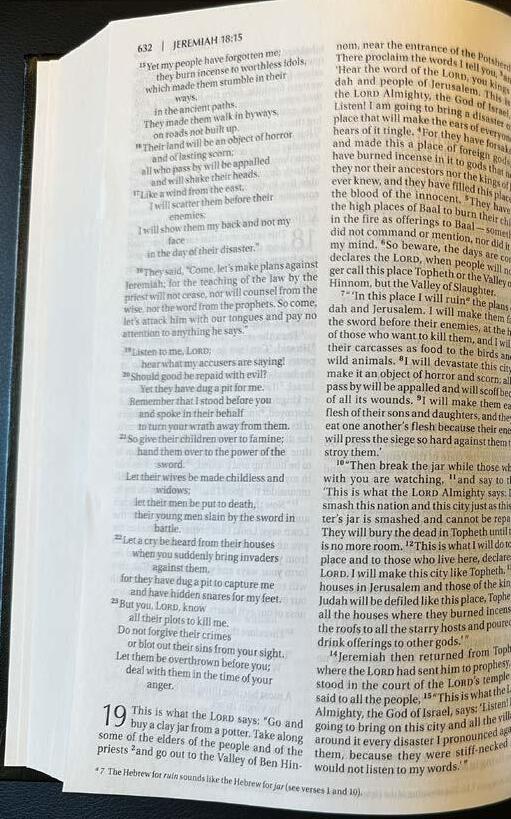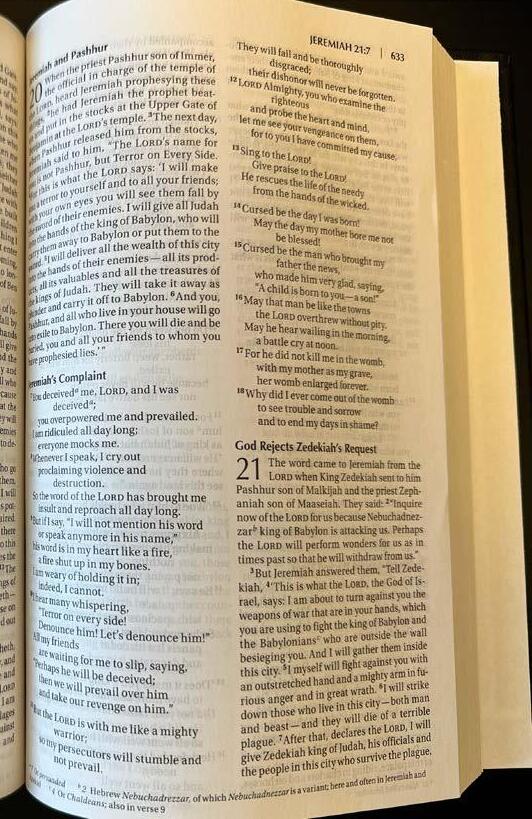
2 minute read
The Missing Pew Bibles!
from May Delve 2023
by SGC_Church
By Ben Reynolds on behalf of the Bible Committee
You may have noticed that there are no Bibles in the pew racks, and there haven’t been since social distancing became a thing. While it would have made sense to return them to their racks already, not having an official pew Bible has allowed opportunity for rethinking which English translation is a better fit for our worship times together as a community. Our previous pew Bible translation (Holman Christian Standard Bible or Christian Standard Bible) contained some style and translation issues that were no longer quite right for our postpandemic community (The HCSB could be a bit stiff!). Pastors Greg and Sam gathered a small group of deacons and elders to discern what translation would be a better fit. The group met in mid-April 2023 and reviewed six English translations.
Advertisement
Like many aspects of North American culture, we suffer from too much choice when it comes to Bible translations. There are three different types of translation philosophies when it comes to the Bible: formal equivalence (word-for-word), dynamic equivalence (thought-for-thought), and free translation (broader than thoughtfor-thought). Ultimately, all translations attempt to put meaning stated in one language into the words of another language, but translation from one language into another is often difficult. Being “lost in translation” is a real experience. The translation of the Bible can be even more difficult than translating between modern languages because we are separated from the Bible’s ancient languages of Hebrew, Aramaic, and Greek by over 2,000 years of history and culture. The Bible translation discernment team discerned that the New International Version (NIV) (2011) is a better fit for Spring Garden. This does not mean the NIV is the best or most accurate translation, but the NIV works well for our pew Bible because it has a grade 7 reading level and good readability, among other features. The NIV was translated by English-speaking, evangelical biblical scholars from countries in Africa, Europe, and North America, as well as India and Australia. The first full edition of the NIV was published in 1978, with revisions in 1984, 2005, and 2011. The latest update took into consideration changes of English use and also new discoveries from the biblical world.

The Spring Garden Church committee that discerned the choice of this Bible for use in worship would like to note that the NIV uses the term “mankind” to refer to “humanity” or “humankind.” The original languages of the Old and New Testament use the term “man” (Hebrew: adam; Greek: anthropos) to refer to all human beings. In common, spoken English, especially in our church community in 2023, the vast majority of English speakers no longer use the terms “man” or “mankind” to refer to all humanity. So as you read the NIV 2011, be aware that “mankind” refers to all of humanity and substitute “humankind” or “human beings” as you read.
Although the NIV 2011 will be the main Bible translation used for scripture reading and for sermons, please continue to use whatever Bible translation is most familiar to you. A comparison of two to three translations is often quite helpful in studying the Bible, especially if they belong to different translation philosophies. All translations are attempting to make the original languages of God’s Word as clear as possible. The Bible is the Word of God, and God speaks to us through his word. Hear the voice of the Lord as you read and listen to the Bible, no matter the translation or language.
Do you want to share something God is doing in your life or that you see God working around you? Something that could be a positive influence for the readers? A poem, story, art, photos...? We want to hear from you!
Email delve@springgardenchurch.ca if interested.




